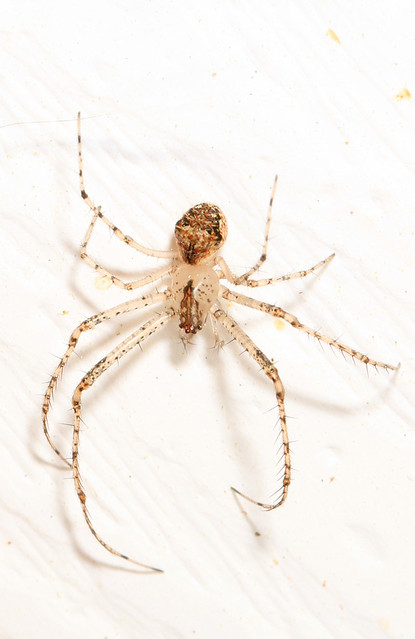#Arachtober: There Be Pirates
You might be thinking: what’s the connection between pirates and spiders? Well, buckle up because in this post, we’re going to dive (or sail) our way into the weird world of pirate spiders. As you might have guessed, pirate spiders conduct raids but instead of working on the high seas, they raid webs.

Pirate spiders belong to the family Mimetidae. Worldwide, there are around 200 species which have been described, and in Maryland, only 2 have been confirmed. These sneaky spiders don’t build their own webs but often prey on web builders in the orbweaver and cobweb spider families. Once the ‘pirates’ reach another spider’s web, they will begin plucking web lines similar to a trapped insect. Some pirates will go as far as to snap certain lines of the web to mimic struggling winged insects like flies. If the host spider moves towards the ‘pirate’ to investigate what it caught, the ‘pirate’ will often lunge forward and bite the host spider. Interestingly enough, the pirates bite the legs of the host spiders to subdue them, and the pirate’s venom is potent against other spider species. Not only will the pirates eat the adult spiders, but they will also snack on any existing egg sacs in the web.
With a cursory glance, pirate spiders may resemble cobweb spiders or male orbweavers, but if you look closely, the pirates will usually have long and short spines on their legs which sets them apart. The Pirate Spider (Mimetus puritanus) and Ero sp. have been documented in Maryland. Because of their resemblance to other spider species, it is easy to misidentify pirate spiders. A study by Dr. Richard Vetter (2005) found that pirate spiders are one of the many spiders misidentified as brown recluse spiders due to pigmentation on their heads.

Pirate spiders in the Ero genus often suspend their globular egg sacs from a thin strand. I have seen these odd structures while hiking but never knew who/what it belonged to until recently. So cool!
